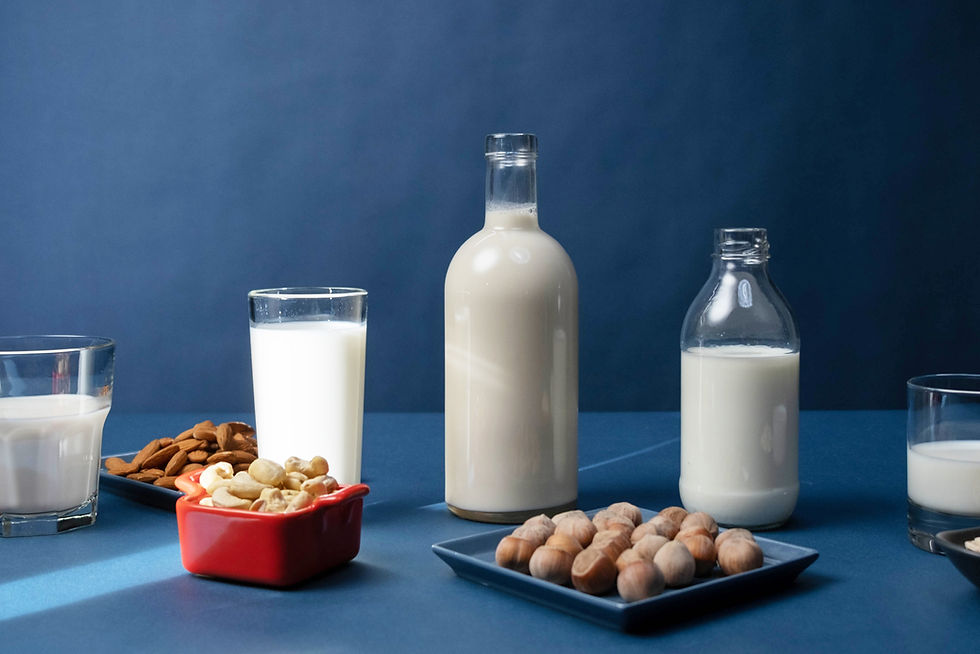Is It Good To Eat Porridge?
- The Young Vegan

- May 31, 2020
- 3 min read
Updated: Mar 15, 2021
Traditionally porridge is a breakfast dish that is made by cooking oats with either water or milk. In some countries it was considered animal food, but in others, Scotland in particular, it was thought to be the best way to start the day and it looks like the the Scots were right.

Nutrients
Porridge oats are wholegrains, they contain vitamins, including vitamin B1, B2, B3 and vitamin E; they contain minerals like iron, magnesium and zinc as well as anti-oxidants and polyphenols. Oats also contain both soluble and insoluble fibre. Soluble fibre, called beta-glucan, can help to lower your cholesterol levels and insoluble fibre is good for your gut as it adds bulk to your waste making it move through you quickly and easily. When making porridge it is good to use a fortified plant milk as, not only does it make really tasty porridge, but it will also give you more vitamins and minerals and many are a source of vitmain B12.
Are All Porridge Oats The Same?
When you go to the supermarket you will find many different types of oats. There will be bags and boxes of plain porridge oats, boxes of quick cook oats like Ready Brek, sachets of microwave porridge, some with flavourings, pots of porridge that are made with boiling water, porridge with dried fruit, porridge with protein, it goes on and on; but which is the healthiest?
With plain oats you can get rolled oats, steel cut oats and the quick cook variety. Rolled oats are steamed and pressed and steel-cut oats are whole oats cut into smaller pieces, they have a more chewy texture and make a chunkier porridge. Quick cook oats make a very smooth porridge, they are often partially cooked and are processed to make the pieces smaller so that they cook faster. When you buy plain porridge the health differences between the three types are really small. As with most foods the less processed the oats are the better they will be for you, but if you don't like a thick, chunky porridge and prefer quick cook oats choose the quick cook oats, porridge is such a healthy food to eat it doesn't matter too much. Flavoured porridge is a whole different matter. The packets, sachets and pots, although convenient, are not great for your health. They often contain quite large amounts of sugar and can use flavourings, they are a processed food. It is really quick and easy to make porridge yourself that tastes amazing, especially if you use a microwave for speed and, depending on what you add to it, you make it a nutrition packed bowl of goodness.
A simple way to add more nutrients and flavour to your porridge is to add fresh fruit. Sliced banana, blueberries, grated or chopped apple add vitamins, fibre, antioxidants and phytonutrients. A handful of grapes or blackberries taste amazing in hot porridge. Dried fruit such as raisins, cranberries or apricots can be kept in the cupboard for weeks and will add sweetness, flavour and more goodness to your bowl. You can also add different spices such as cinnamon or nutmeg to make your porridge smell and taste amazing. Nuts, nut butters and seeds will add good fats, fibre, vitamins and minerals, just remember to grind your seeds first.
How do you eat your porridge? Let me know in the comments below, I prefer to have mine with cinnamon and frozen fruit that I warn in the microwave. Yum!!!
Check out our porridge recipes post for 11 Tasty Porridge Toppings that you can try.




شيخ روحاني
رقم شيخ روحاني
الشيخ الروحاني
الشيخ الروحاني
شيخ روحاني سعودي
رقم شيخ روحاني
شيخ روحاني مضمون
Berlinintim
Berlin Intim
جلب الحبيب